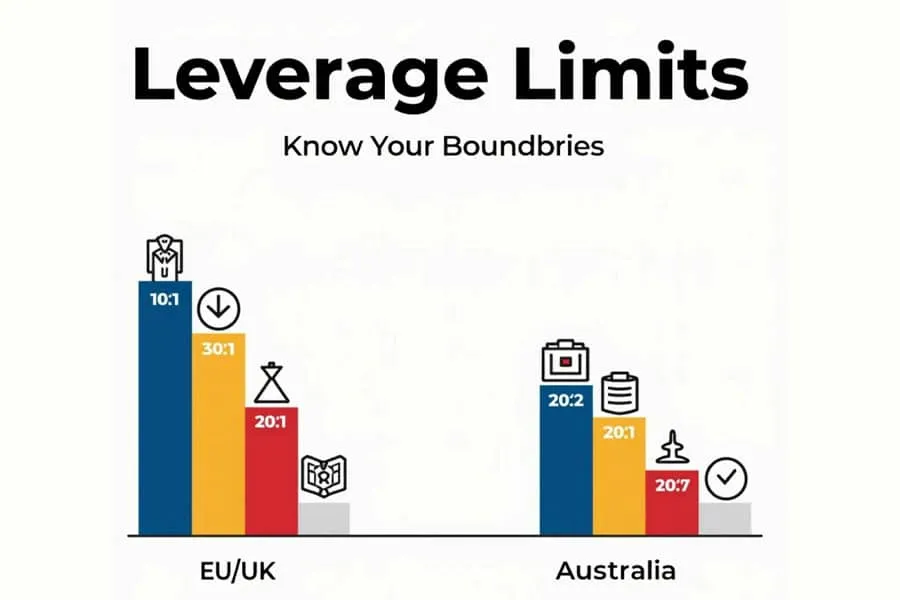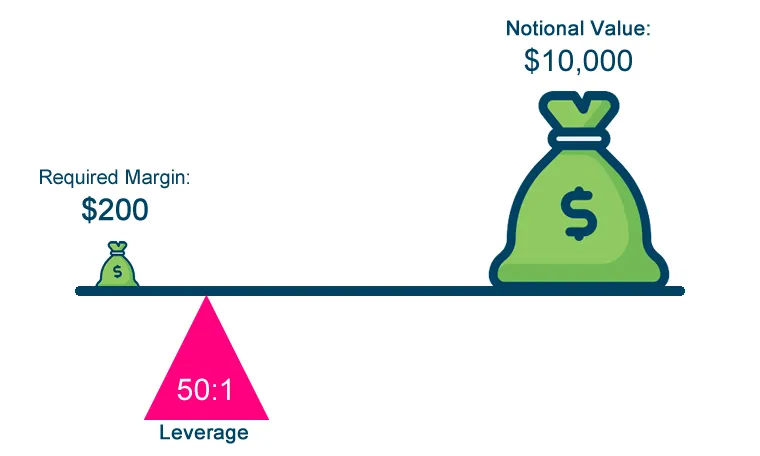 BrokerHiveX
BrokerHiveX BrokerHiveX
BrokerHiveX BrokerHiveX
BrokerHiveXSummary:Leverage is a core feature of forex trading, enabling traders to control larger positions with less capital. While leverage can magnify profits, it can also magnify losses, making it a double-edged sword for both retail and professional investors.

Leverage is a core feature of forex trading, enabling traders to control larger positions with less capital. While leverage can magnify profits, it can also magnify losses, making it a double-edged sword for both retail and professional investors. In recent years, global regulators have increasingly tightened leverage restrictions to protect retail investors from excessive risk and promote market stability. As of 2025, these regulations have become more important than ever, profoundly impacting broker services, trading strategies, and investor outcomes.
This article provides a comprehensive, data-driven analysis of the impact of leverage restrictions on forex trading. Drawing on authoritative sources, including the UK Financial Conduct Authority (FCA), the Australian Securities and Investments Commission (ASIC), and exclusive data from BrokerHiveX, we explore regulatory policy, broker compliance, risk management strategies, and broader market implications. Our goal is to provide transparent, actionable insights for investors, professionals, and educators, backed by the latest data and expert interpretation.
Key evidence:
According to FCA data, 74%-89% of retail CFD traders lose money, highlighting the importance of understanding the logic behind leverage and its regulatory restrictions.
👉 BrokerHiveX - The Complete Guide to CFD Leverage (2025)
Leverage in forex trading refers to the use of borrowed funds to increase market exposure. Its value is usually expressed as a ratio, such as 30:1 or 50:1, which represents the size of the position that a trader can control with margin.
For example, using 50:1 leverage, a trader can control a $10,000 position with only $200 in margin. This mechanism may result in higher returns on capital, but it also amplifies losses by the same amount.

Example:
If a trader uses 50:1 leverage and the market moves 2% in the opposite direction, the loss will no longer be 2% of the margin, but 100% - the entire $200 will be lost.
Leverage is closely related to margin: margin is the collateral required to open a leveraged position, while leverage determines the multiple of the position relative to the margin.
Although high leverage is attractive, it carries huge risks:
Statistics:
The FCA report shows that 74%-89% of retail CFD traders lose money, with excessive leverage being the main factor.
👉 BrokerHiveX - The Complete Guide to CFD Leverage (2025)
Conduct Risk:
High leverage often leads to emotional trading, excessive risk exposure, and impulsive decision-making. Traders may place orders beyond their risk tolerance, increasing the risk of margin calls and the likelihood of rapidly depleting capital.
Case Study:
Trader A uses 50:1 leverage and loses 100 pips, resulting in a 41.5% capital loss.
Trader B executed the same trade using 5:1 leverage and only lost 4.15%.
👉 Investopedia - Forex Leverage
Margin Call:
BrokerHiveX data shows that 80% of margin calls occur when leverage exceeds 50:1, highlighting the dangers of excessive leverage.
👉 BrokerHiveX - The Complete Guide to CFD Leverage (2025)
Regulators around the world implement leverage restrictions to protect retail investors and ensure market stability. The main frameworks include:
FCA (UK):
The leverage limit for major currency pairs is 30:1, for minor currencies and gold it is 20:1, for commodities (excluding gold) it is 10:1, for stocks it is 5:1, and for cryptocurrencies it is 2:1.
Enforce negative balance protection and margin call closeout rules.
👉 FCA official press release
ASIC (Australia):
Leverage limits are similar to the FCA: 30:1 for major forex, 20:1 for minors, 10:1 for commodities, and 2:1 for cryptocurrencies.
The Product Intervention Order for CFDs has been extended to 2027, significantly reducing retail investor losses and negative balance incidents.
ASIC Media Release
CFTC/NFA (US):
The maximum leverage for major currency pairs is 50:1, and for minor currencies it is 20:1.
ESMA (EU):
Aligned with the FCA: 30:1 for mainstream forex, 2:1 for cryptocurrencies, etc.
Comparison of leverage limits by region and asset class:
| Region/Regulator | Mainstream foreign exchange | Minor FX/Gold | commodity | stock | Cryptocurrency | Professional Account |
|---|---|---|---|---|---|---|
| FCA (UK) | 30:1 | 20:1 | 10:1 | 5:1 | 2:1 | Up to 500:1 |
| ASIC (Australia) | 30:1 | 20:1 | 10:1 | 5:1 | 2:1 | Up to 500:1 |
| CFTC/NFA (US) | 50:1 | 20:1 | N/A | N/A | N/A | N/A |
| ESMA (EU) | 30:1 | 20:1 | 10:1 | 5:1 | 2:1 | Up to 500:1 |
👉 BrokerHiveX - The Complete Guide to CFD Leverage (2025)
The main purposes of leverage caps include:
Investor Protection:
Prevent retail investors from suffering devastating losses due to excessive leverage.
Market stability:
Reduce extreme price volatility and systemic risks.
Empirical results:
ASIC reported that after implementing leverage restrictions, overall net losses decreased by 91%, forced liquidations decreased by 87%, and negative balances decreased by 88%.
ASIC Media Release
Ongoing Challenges:
Regulators need to strike a balance between investor protection, market competitiveness and technological evolution.
👉For more information on global regulatory frameworks, please visit the BrokerHiveX Regulatory Database
Brokers operating under FCA and ASIC regulation must strictly adhere to leverage limits set for retail clients. According to exclusive data from BrokerHiveX:
Retail vs. Professional Accounts:
The leverage limit for retail accounts under FCA/ASIC regulation is 30:1, while for professional accounts it can be as high as 500:1.
Example: IC Markets is regulated by ASIC and offers leverage of 30:1 for retail clients and up to 500:1 for professional clients.
👉 BrokerHiveX - IC Markets Review
Transparency and Disclosure:
Brokers ranked highly on BrokerHiveX are assessed for their clear disclosure of leverage limits, risk warnings, and compliance information.
Brokers that clearly communicate their leverage policies and offer negative balance protection score higher in the BrokerHiveX global forex broker rankings .
Leverage restrictions have reshaped the industry's competitive landscape:
Product Design:
Brokers develop a variety of account types, offering lower leverage to retail clients and higher leverage to professional clients who meet qualification requirements.
Risk Management Tools:
Mainstream brokers are now generally equipped with advanced risk control features such as stop-loss orders, liquidation rules and negative balance protection.
Compliance scoring mechanism:
The BrokerHiveX ranking model uses leverage transparency and regulatory compliance as key indicators to ensure that only brokers that meet the highest standards are recommended.
Case Study:
IC Markets and CWG Markets have adjusted their services to comply with leverage restrictions in different regions, while maintaining competitive spreads and strong risk management mechanisms.
👉For a detailed comparison of brokers, please refer to BrokerHiveX's global forex broker rankings.
The choice of leverage should take into account various factors:
Account size:
Larger accounts are better able to withstand volatility, but all traders should use leverage with caution.
Risk Tolerance:
Conservative traders may choose lower leverage (5:1–10:1) to protect capital; aggressive traders can use higher leverage but accept higher risk.
Trading strategy:
High-frequency traders (such as scalpers) may use medium leverage for short-term trading; swing and trend traders tend to use lower leverage to avoid triggering margin calls during market fluctuations.
Example:
BrokerHiveX data shows that 80% of margin calls occur when leverage exceeds 50:1, further demonstrating the importance of conservative leverage selection.
👉 BrokerHiveX - The Complete Guide to CFD Leverage (2025)
Risk management is crucial in any leverage regime:
Stop-loss order:
Set a loss limit and automatically close your positions to limit losses.
Position Sizing Control:
Reasonably adjust the transaction size according to your account balance and risk appetite.
Negative Balance Protection:
Ensuring that traders do not lose more than their deposits is now a mandatory measure under FCA and ASIC regulation.
Continuous monitoring:
Review your holdings regularly, especially during periods of high volatility.
Expert advice:
BrokerHiveX experts recommend that leverage should be used as a tool for flexible fund management rather than a means to magnify positions.
👉For more risk management advice, please refer to the BrokerHiveX expert information page
Leverage restrictions help:
Market stability:
Research shows that leverage caps can reduce extreme price volatility and systemic risk without significantly weakening overall market liquidity.
👉 BrokerHiveX - The Complete Guide to CFD Leverage (2025)
Trade-off Analysis:
Although trading volumes may decline slightly, the benefits of reduced systemic risk and enhanced investor protection far outweigh the drawbacks.
Leverage restrictions also significantly impact trader behavior:
Reduce emotional trading:
Reducing leverage can curb impulsive, high-risk trades and make trading more rational and analysis-based.
Enhance investor education:
Information transparency and mandatory risk warnings help investors develop responsible trading habits and make wise decisions.
Looking ahead, the following trends will shape the leverage management landscape:
Fintech Innovation:
More and more trading platforms are introducing AI-driven risk control and dynamic leverage adjustment tools to provide personalized risk management.
Regulatory evolution:
Regulators around the world are expected to continue to improve leverage policies in response to market changes and technological advances.
Global Regulatory Coordination:
Efforts to standardize leverage limits across countries will promote cross-border transactions and regulatory collaboration.
👉To learn about the latest leverage regulations and market impact, please visit BrokerHiveX Financial News
Leverage restrictions have profoundly reshaped the forex trading ecosystem, striking a balance between ensuring market access and strengthening investor protection. The main conclusions are as follows:
Leverage is a powerful tool, but excessive use can significantly increase risk.
Major global regulatory bodies (such as the FCA and ASIC) have implemented a 30:1 leverage cap on major currency pairs, significantly reducing losses and margin calls for retail investors.
Whether a broker is compliant is an important factor in selecting a platform and evaluating its ranking.
Risk management tools such as conservative leverage, stop-loss orders, and negative balance protection are crucial to long-term trading success.
Leverage limits promote market stability and encourage more responsible trading behavior.
Recommended actions:
Choose a compliant broker with a transparent leverage policy.
👉Please visit BrokerHiveX Global Forex Broker Rankings
Pay close attention to regulatory developments:
👉Use BrokerHiveX to monitor database and financial news
Apply robust leverage and risk management strategies to protect trading capital.
Leveraging authoritative data, expert insights, and transparent broker reviews, BrokerHiveX empowers traders and professionals to navigate the ever-evolving world of leverage with confidence and clarity.
BrokerHivex is a financial media platform that displays information sourced from the public internet or uploaded by users. BrokerHivex does not endorse any trading platform or instrument. We are not responsible for any trading disputes or losses arising from the use of this information. Please note that the information displayed on the platform may be delayed, and users should independently verify its accuracy.